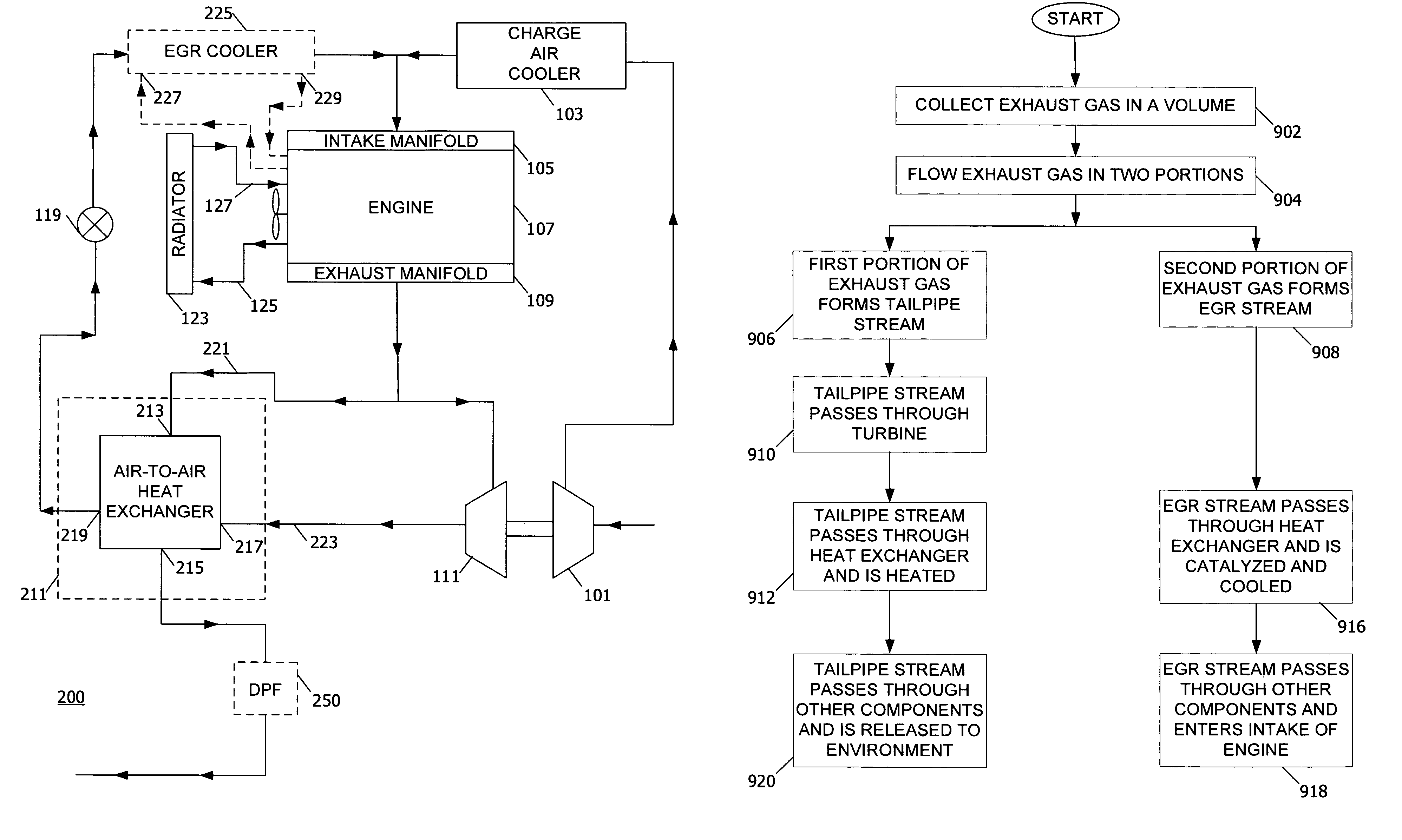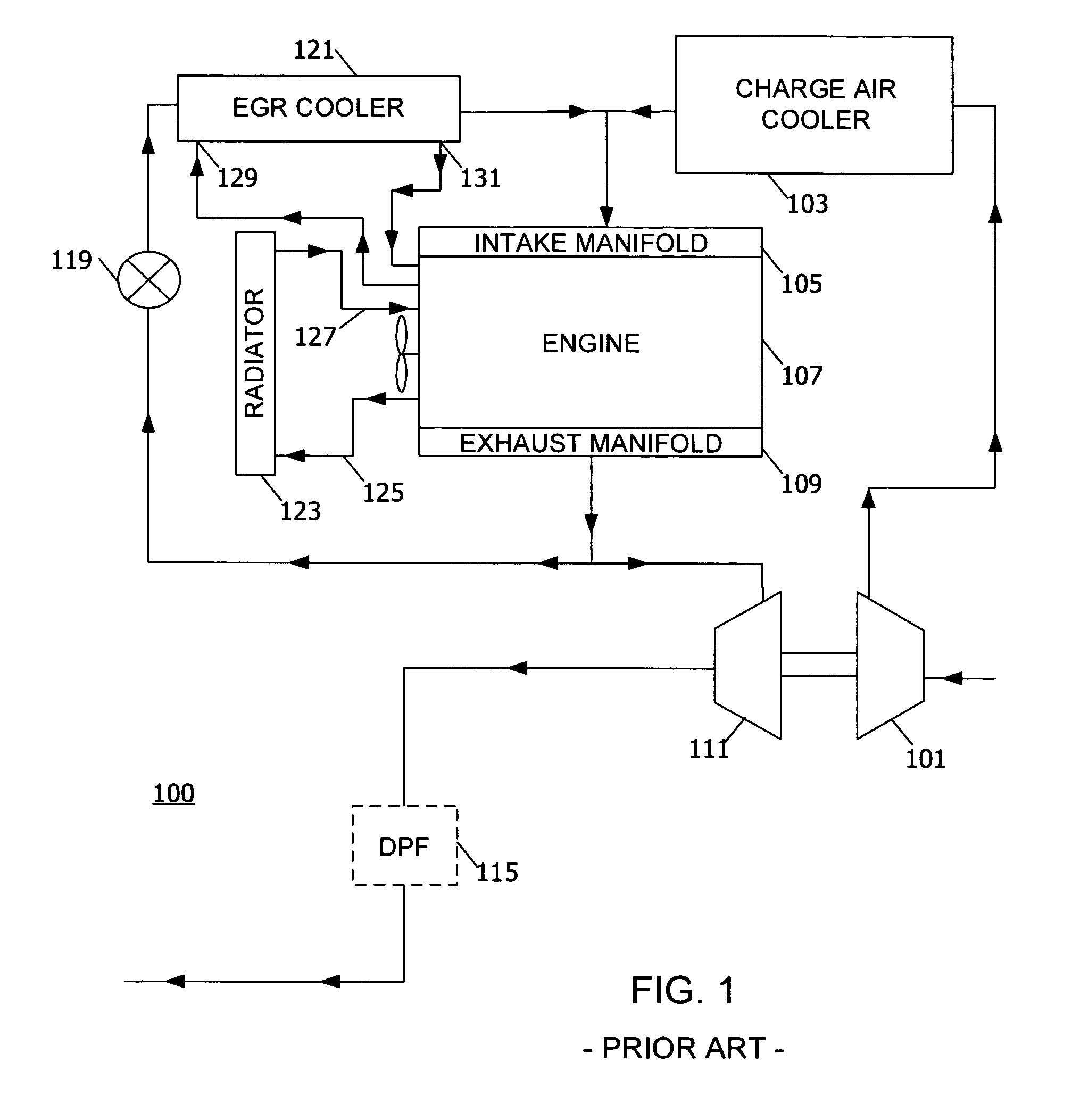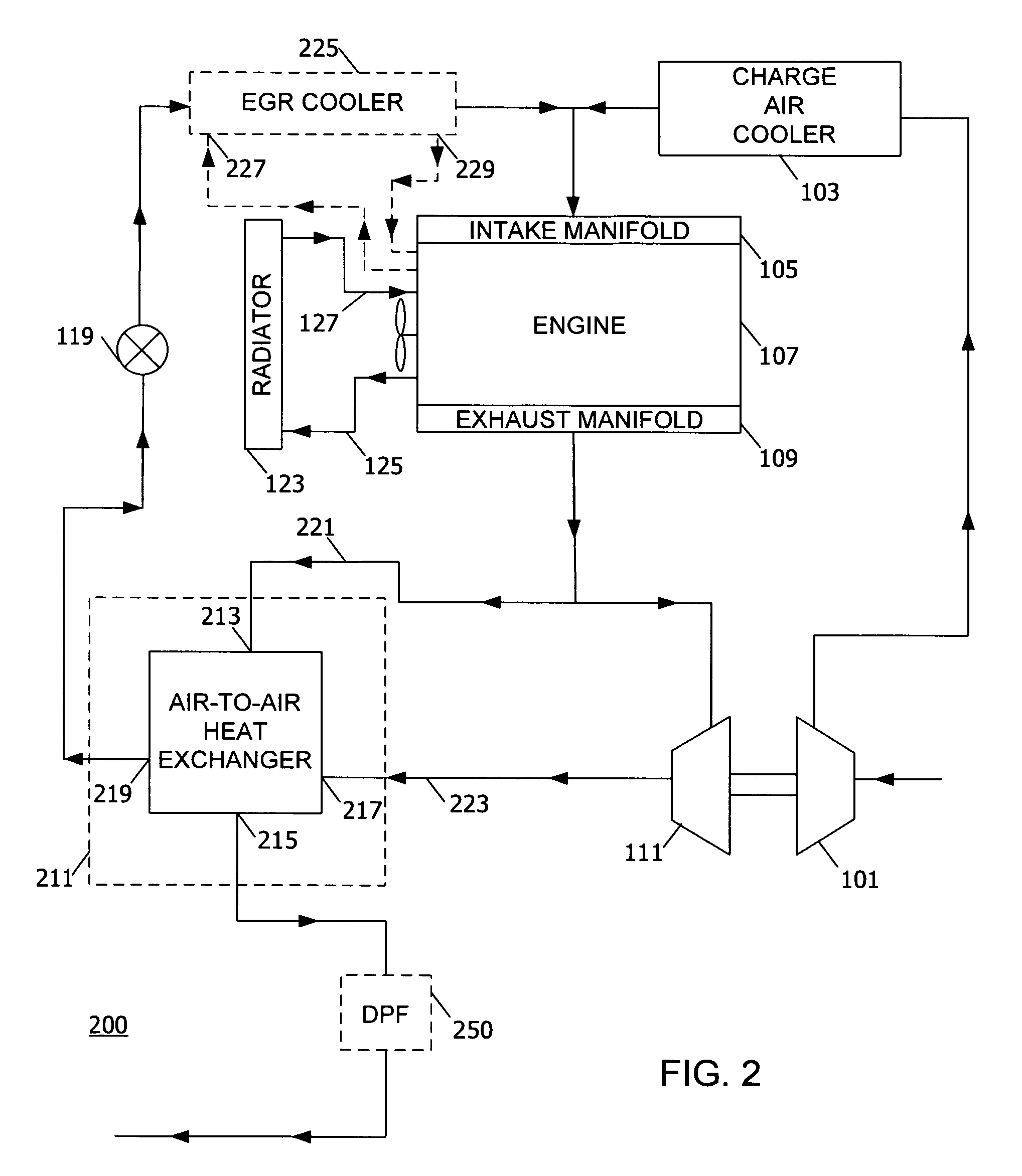Oxidation catalyst coating in a heat exchanger
a heat exchanger and catalyst technology, applied in the direction of indirect heat exchangers, machines/engines, lighting and heating apparatus, etc., can solve the problems of reducing affecting the efficiency of heat removal, and affecting the performance of heat removal
- Summary
- Abstract
- Description
- Claims
- Application Information
AI Technical Summary
Benefits of technology
Problems solved by technology
Method used
Image
Examples
Embodiment Construction
[0021]The following describes an apparatus for and method of reducing undesirable heat load for a cooling system of an internal combustion engine. A typical turbocharged diesel engine system 100 having cooled EGR is shown in FIG. 1. Fresh air enters a compressor 101 of an engine 107. An outlet of the compressor 101 is connected to a charge air cooler 103. An outlet of the charge air cooler 103 is connected to an intake manifold 105 of an engine 107. Compressed air enters a combustion chamber through the intake manifold 105 of the engine 107, where it is mixed with fuel. The mixture of air and fuel is compressed in the combustion chamber and combusts releasing work and heat. Heat released from the combustion of fuel and air is removed from the engine 107 in two ways. First, fluids such as oil and / or water-based coolants are circulated through the engine 107, in direct contact with engine components.
[0022]As engine components heat up, fluid circulating through the engine 107 is heated...
PUM
 Login to View More
Login to View More Abstract
Description
Claims
Application Information
 Login to View More
Login to View More - R&D
- Intellectual Property
- Life Sciences
- Materials
- Tech Scout
- Unparalleled Data Quality
- Higher Quality Content
- 60% Fewer Hallucinations
Browse by: Latest US Patents, China's latest patents, Technical Efficacy Thesaurus, Application Domain, Technology Topic, Popular Technical Reports.
© 2025 PatSnap. All rights reserved.Legal|Privacy policy|Modern Slavery Act Transparency Statement|Sitemap|About US| Contact US: help@patsnap.com



